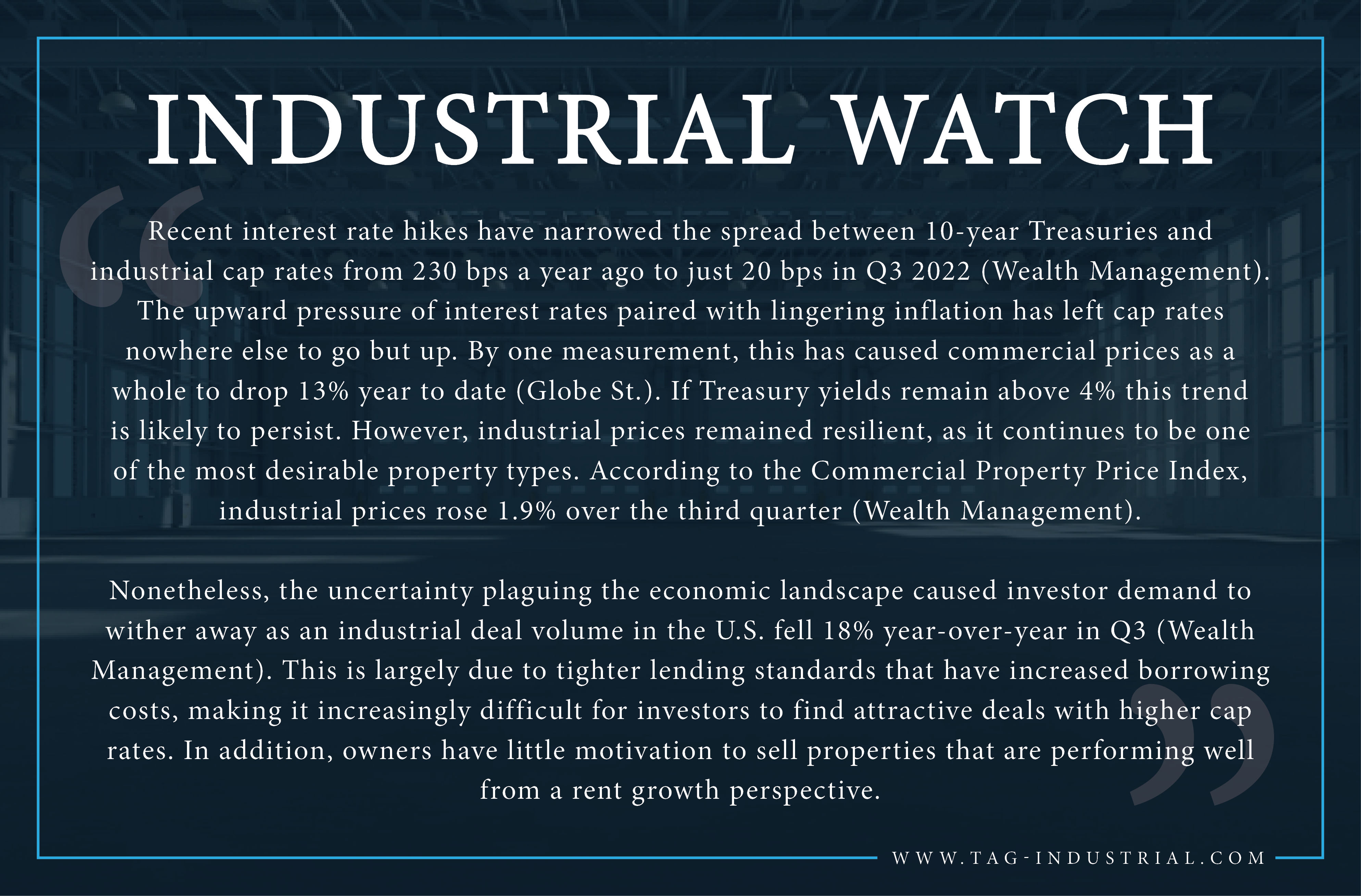TAG Industrial Watch: November 28, 2022
Recent interest rate hikes have narrowed the spread between 10-year Treasuries and industrial cap rates from 230 bps a year ago to just 20 bps in Q3 2022 (Wealth Management). The upward pressure of interest rates paired with lingering inflation has left cap rates nowhere else to go but up. By one measurement, this has caused commercial prices as a whole to drop 13% year to date (Globe St.). If Treasury yields remain above 4% this trend is likely to persist. However, industrial prices remained resilient, as it continues to be one of the most desirable property types. According to the Commercial Property Price Index, industrial prices rose 1.9% over the third quarter (Wealth Management).
Nonetheless, the uncertainty plaguing the economic landscape caused investor demand to wither away as an industrial deal volume in the U.S. fell 18% year-over-year in Q3 (Wealth Management). This is largely due to tighter lending standards that have increased borrowing costs, making it increasingly difficult for investors to find attractive deals with higher cap rates. In addition, owners have little motivation to sell properties that are performing well from a rent growth perspective.
I N D U S T R I A L N E W SIndustrial Sales Not Immune from Impact of Higher Interest Rates Global Direct CRE Investment Falls for First Time Since the Pandemic CRE Roles On The Chopping Block? How The Downturn May Shift Real Estate Jobs Market Real Estate Roundtable’s Economic Sentiment Index Drops Five Points from Q3 Nationwide Decrease In Construction Cost Inflation, But Some Metros Slower To Dip R E G I O N A L N E W SMarcus & Millichap Brokers Sale of 108,951 SF Industrial Building in Fort Worth I-90: What’s With All The New Tenants? Despite A Strong Market, Dallas CRE Is Feeling The Strain Of Material Delays. Planning Ahead Can Help NorthPoint Development Lands EV Maker’s Headquarters
|
